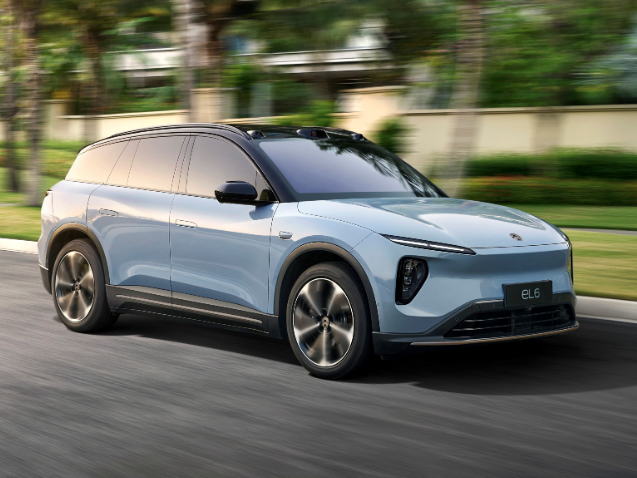
Euro NCAP has announced safety ratings for three new “trendy” crossovers: the (LHD only) Nio EL6, the redesigned Toyota C-HR and Honda’s CR-V.
Nio already has a wide range of models sold in Scandinavia and Germany and its ES8, ET7, ET5, and EL7 all previously achieved a five star rating. The EL6 achieved likewise.
The EL6, like other NIO models, uses a camera, radar, and lidar to sense objects around it, to avoid or mitigate accidents.
“This is cutting edge, yet pricey, technology that is now employed in only a few vehicles,” Euro NCAP said.
“The EL6’s automated emergency braking (AEB) system performs effectively with respect to collisions against passenger vehicles and is good at protecting against vulnerable road users, but not in oncoming and overtaking motorcyclist scenarios.”
The Toyota C-HR also rated five stars like its predecessor in 2017.
Euro NCAP said the C-HR’s autonomous emergency braking system “performed particularly well, earning top marks in almost every test. The standard-fit driver monitoring system is indirect, relying on steering inputs and lane position to detect indicators of drowsy driving. A more sophisticated direct eye monitoring device is available as an option but was not fitted to the test vehicle”.
The Honda CR-V 2.0 Hybrid rated four stars with base equipment and five with the optional Sensing 360 package. The base car has a camera and a single radar: the safety pack includes corner radars to improve Advanced Driver Assistance System (ADAS) performance in general, as well as in specific turning scenarios. The optional safety pack significantly enhanced AEB performance, particularly in terms of preventing collisions with pedestrians and vehicles.
Euro NCAO said: “It comes as no surprise that these three sophisticated cars are hitting the mark, albeit with an optional safety pack in the case of the CR-V. It is rewarding to see advanced sensing solutions such as lidar being deployed to provide ever better crash avoidance however greater focus still needs to go on the safety of other road users.
“Unfortunately, crashes cannot always be avoided, and high crashworthiness remains a critical backbone. Our post-crash inspection, which has been an essential part of our crash protection assessment since 1997, discovered weaknesses in all three vehicles, including poor airbag deployment and occupant submarining. Manufacturers should be careful not to overlook the fundamentals in their pursuit of sophisticated solutions.”








